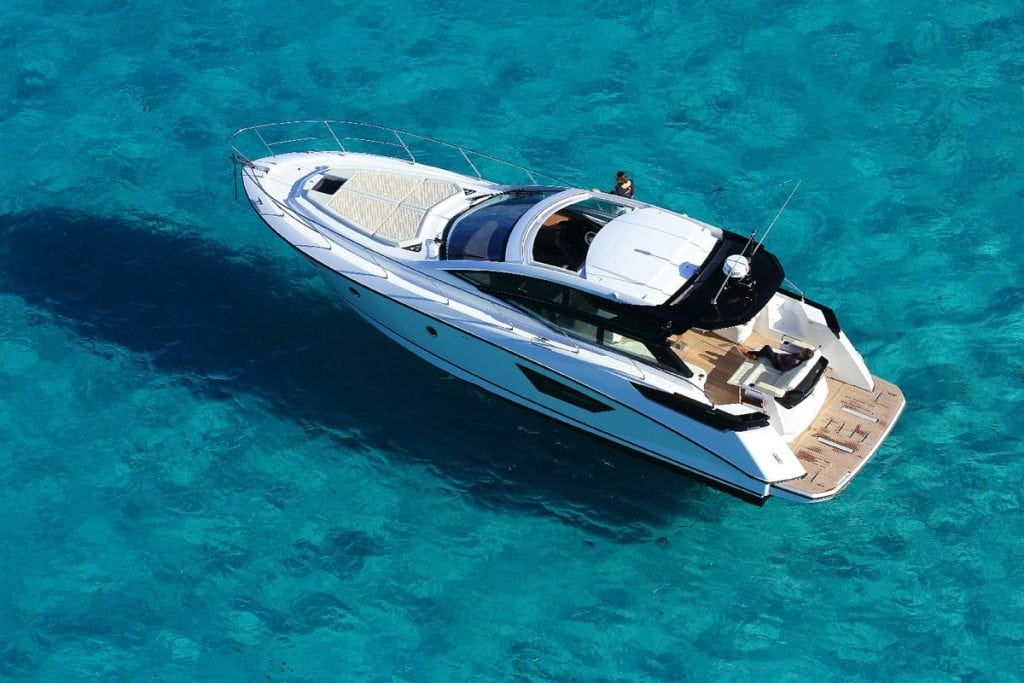Skift Take
Breaking open the yacht rental market with a sharing platform is a difficult endeavor given the challenges of operating a digital business within the luxury sector as well as the nuances and securities needed for an experience as hands-on as yachting.
The growth of social media has made extravagant weekends at sea in Croatia and Ibiza appear attainable and a number of peer-to-peer operators are capitalizing on the opportunity to prove renting a yacht is actually a surprisingly easy thing to do.
The global yacht industry experienced steady growth between 15 percent and 20 percent year-over-year since 2015, according to the National Marine Manufacturers Association, with an improving economy, expanding segment of high net-worth consumers, and flourishing tourism industry all playing a role.
Applying the peer-to-peer model to a luxury industry, however, comes with a unique set of opportunities and challenges compared to the broader sharing economy.
BoatBound was among one of the first to build an “Airbnb for boating,” launching in early 2013, with enthusiastic response. After four years of growth, boat sharing platform Boatsetter bought BoatBound in 2017 as part of the former’s consolidation strategy.
Today Boatsetter connects boat owners, licensed captains, and renters with more than 20,000 completed rentals in more than 600 locations.
“We have seen a number of high-profile first-time boaters enter the world of luxury yacht rentals within the past few years, and our boat-sharing model at Boatsetter has a lot to do with it. It’s an easy, intuitive, mobile booking experience with a qualified inventory of vessels, and available USCG Licensed Captains,” Jorge Cabre, supply marketing manager at Boatsetter said.
Boatsetter has honed into the opportunities that social media provides, targeting a millennial market looking to taste luxury experiences at an accessible price point.
“We have invested significantly in digital marketing initiatives aimed at new audiences over the last few years — and continue to do so. Social media, for example, has become a ‘game changer’ helping to spread the glamorous yacht life to a wider audience than ever before, especially to millennials, who generally choose to live the experience for $3,000 rather than owning the vessel for $2 million,” Cabre said.
“We proudly call ourselves the boldest millennial point of entry to yachting in the marketplace.”
Millennials are the fastest growing segment driving demand for Sailo — another peer-to-peer platform for yacht rentals that launched in 2014. To best meet millennials’ expectations, Sailo’s digital transactions can be performed in minutes and on mobile devices.
The Luxury Distinction
Platforms such as Boatsetter and Sailo offer services beyond just making the boat appear. Insurance is an integral piece of the formula as well as more luxurious add-ons such as towing services, captains, and concierge teams.
“Customers in the luxury sector expect an exceptional level of service and the sharing economy model has to adapt to meet these expectations. For example, a luxury yacht rental customer could expect additional staff besides the captain such as hostess, chef, and servers, airport transfers, or custom designed itineraries,” Magda Marcu, co-founder of Sailo said.
“Our concierge assists our boat owners and clients with all these arrangements, but we see more interest from boat owners in providing more complete and unique services for upscale clients.”
Glamorized Aggregators?
Although BoatSetter, Sailo and its peers may identify as peer-to-peer platforms, the reality of where these boats are coming from is slightly different – making it difficult to not at least wonder whether they could be better described as glamorized third-party aggregators for charter businesses.
In Boatsetter’s case, 38 percent of boats are privately owned and 72 percent are charter operated.
In Sailo’s case, 30 percent of boats are privately owned in the U.S. but that ratio slides down to 10 percent on a global scale. The other 90 percent of boats are served by professional companies.
Both claims that the highest growth comes from private owners and expect that segment to overtake professionally operated boats. Sailo’s fleet experiences three-fold growth each year.
Other players in luxury rental space are more tepid when it comes to the growth potential of yachts in a peer-to-peer market.
XOJET, for example, is attempting to do for private aviation what these other players are doing for yachts.
“So far no-one has been able to create a viable sharing model around yachts, mainly because of the seasonality of demand whereby most users want the yachts at the same time,” James Henderson says XOJET president of commercial operations said.
He is, however, optimistic about the growth of sharing platforms in traditional luxury sectors.
“The on-demand or sharing economy drives system efficiencies and for luxury consumers this means greater accessibility at lower price thresholds, which makes these products and services available to a broader market cohort. In the private aviation space, we are seeing more and more clients shift from traditional models of full and fractional ownership to the XOJET model as they realize they can get all the benefits of ownership at significantly lower costs.”
The Daily Newsletter
Our daily coverage of the global travel industry. Written by editors and analysts from across Skift’s brands.
Have a confidential tip for Skift? Get in touch
Photo credit: A yacht featuring on Denison Yacht sales. A number of players are trying to make a splash using the peer-to-peer model for the yacht industry. Denison Yacht Sales
